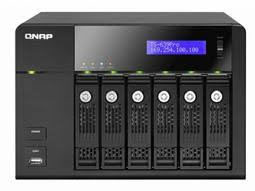How to recover deleted files from nas drive?
NAS Data Recovery
NAS are reliable storage storages. However, they still can fail. If you cannot access your data from the NAS, you can try to recover the data using special NAS recovery softwares. Generally, NAS data recovery involves removing the disks from the NAS, numbering them, Imaging them, then connecting the images to a PC, and extracting files using data recovery software.
Some of the most common NAS device include;
- LaCie
- Western Digital
- QNAP
- Synology
- Buffalo LinkStation and TeraStation
- NETGEAR ReadyNAS
- Iomega Storcenter
- Seagate BlackArmor
- Thecus
- btrfs-based NAS servers
- ASUSTOR
NAS data recovery using Free or Paid NAS Data Recovery Softwares
Most of these NAS recovery software operate the same. But some may be better than others depending with the features.
Here are the steps;
- Get the disks out of the NAS and number them.
After disconnecting the hard drives from the NAS, you should label them with numbers based on their order when setting up ie 0, 1, 2 etc - Take images of the disks and connect them to a PC.
This is a standard practice when it comes to raid configuration. It’s best to work with images incase anything happened, you always take another image from the original storages. Any mistake on the original hard drives could render your data unrecoverable. - Download and install NAS Data Recovery software
Since most NAS devices use md-raid or LVM drivers to handle an array, when choosing a NAS recovery software make such you chose one that supports that. - Select the NAS volume you need to recover and click Start.
Most software’s will be able to automatically populate a volume of the raid data. You should select it and data should start showing.
If you can’t see the array in the NAS Data Recovery Software, then you need to recover RAID configuration first. This process is complex and requires special skills. Without the right configuration, one can’t reconfigure the raid. It’s best to consult a professional data recovery company.
In some case, the Hard Drives could be physically damaged. These faulty disks should not be connected to the PC. However, they should be repaired and an image taken. Raid systems such as Raid 0, require all disk to be available for the process to be successful.
Causes of NAS Failure;
This may happen due to a number of things. Here are some of the most common causes.
• Power outrage:
Power surges may easily lead to NAS failure. Power loss or fluctuation may cause the disk not to integrating to RAID.
• Defective NAS controllers:
Corrupt firmware, operating systems errors, incomplete configuration etc. can also lead to NAS errors.
• Overheating:
Overheating can lead to NAS failure. It’s always advisable to regulate room temperatures.
• User error:
Common errors such as accidental deletion of files and folder can lead to NAS or RAID data loss.
• Manual faults:
When drivers fail, this sometimes causes NAS failure.
• Other natural catastrophes such as fire or water damage or any other natural calamity may lead to NAS failure.


